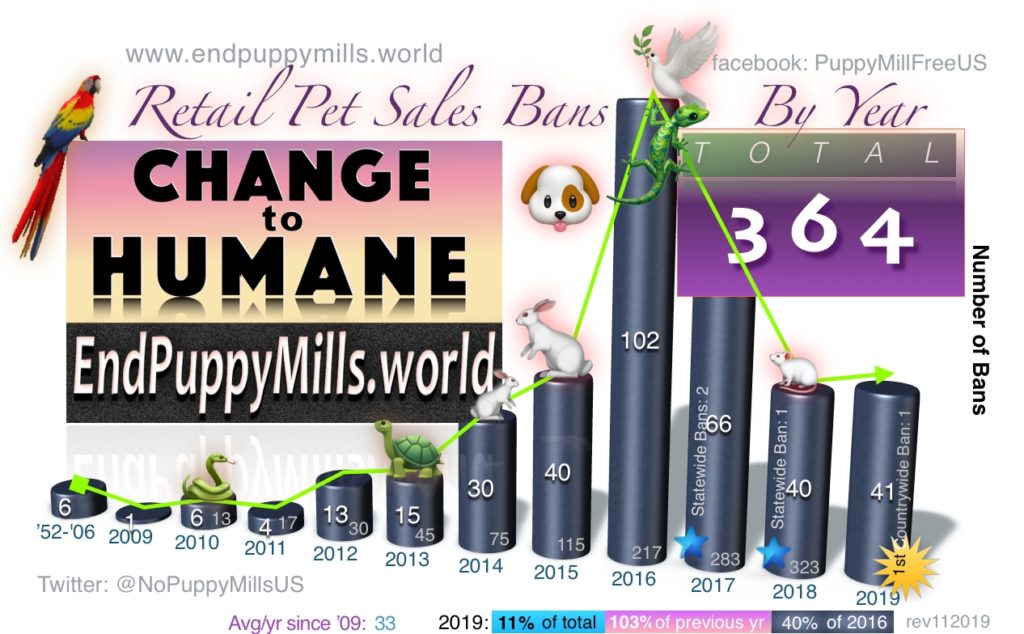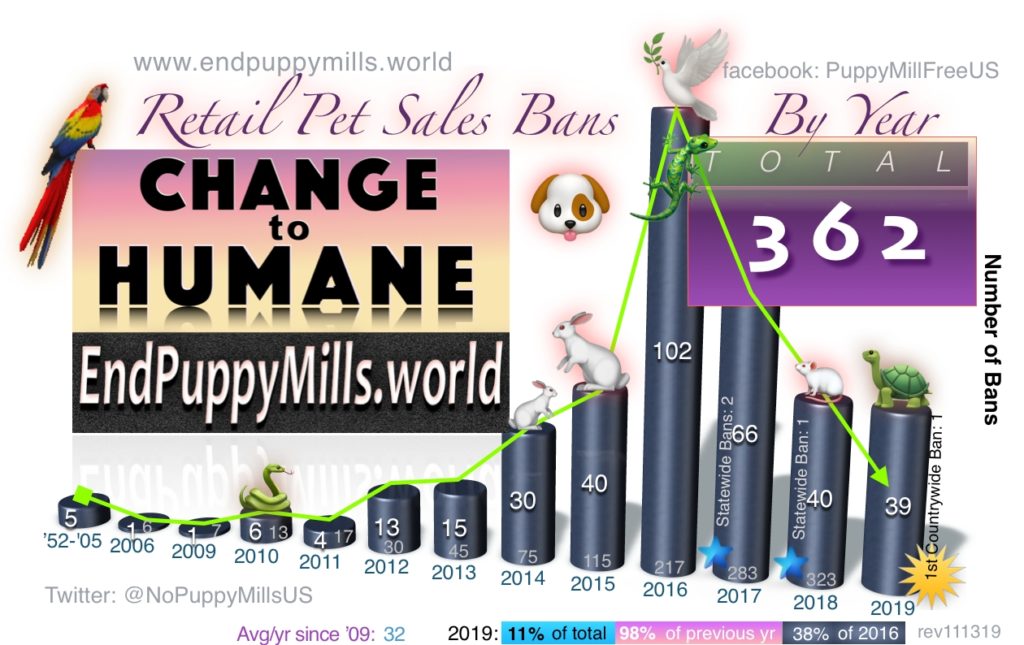We track average bans per year since the first activist ban targeting a puppy store was passed by the hard work of Dawn Armstrong, then Executive Director of South Lake Tahoe Humane Society, which no longer exists. 1
Dawn and the whole community were disgusted by the puppy store there, Brock’s Pups, run by the Franks family, grandfather and grandson, who also owned Lil’ Pups in Carson City and Pets R Us in Meadowood Mall, Reno.
The day Dawn got the ordinance passed, the language of which is still largely in use to this day, the Franks were lead out of Brocks’ Pups in handcuffs for 1). Drug trafficking to minors for which ol’ man Franks was sent up the river for 6 years; and, 2). Parole violations.
Since that fateful day that started a movement, 364 bans have been passed in total, 41 have been passed in 2019, which just bested the previous year, and our average bans per year popped from 32 to 33.

We do have to note, however, we’re only at 40% of the bans passed in the single year 2016 and at just over 10% of the total bans passed. And so far, with the clock ticking to the end of the year, no statewide bans have yet been passed in 2019.
Good news, though: one COUNTRYWIDE ban passed this year, in England, with 2 more on the way in Wales and Scotland. Northern Ireland may join soon, though no action has yet been taken.
1 Dawn Armstrong told us in 2013 when we interviewed her at the start of Puppy Mill Free Reno and our tracking sites Puppy Mill Free US and End Puppy Mills World, that she was able to retire in peace and tranquility now that her work was being duplicated not only all over her home state of California, but was finding passage throughout the US and into Canada.
When Ms. Armstrong left in 2013, Niki Congero was hired as Executive Director. We spoke with her on several occasions regarding animal welfare issues at the lake, but didn’t get a satisfactory response.
Three years later, news broke that Congero had been arrested for embezzlement of the South Lake Tahoe Humane Society, by running up charges to the limit of the credit line of the non-profit. That limit was $60,000. Much of it went to personal expenses, included a gambling jones for which the SLTHS footed the bill.
The organization was not able to recover. The Humane Society of Truckee-Tahoe, a merger in and of itself, absorbed the SLT HS and now runs shelters all around the lake and the nearby High Sierra town of Truckee, California; which, by the way, passed the 124th ban in February 2016.

